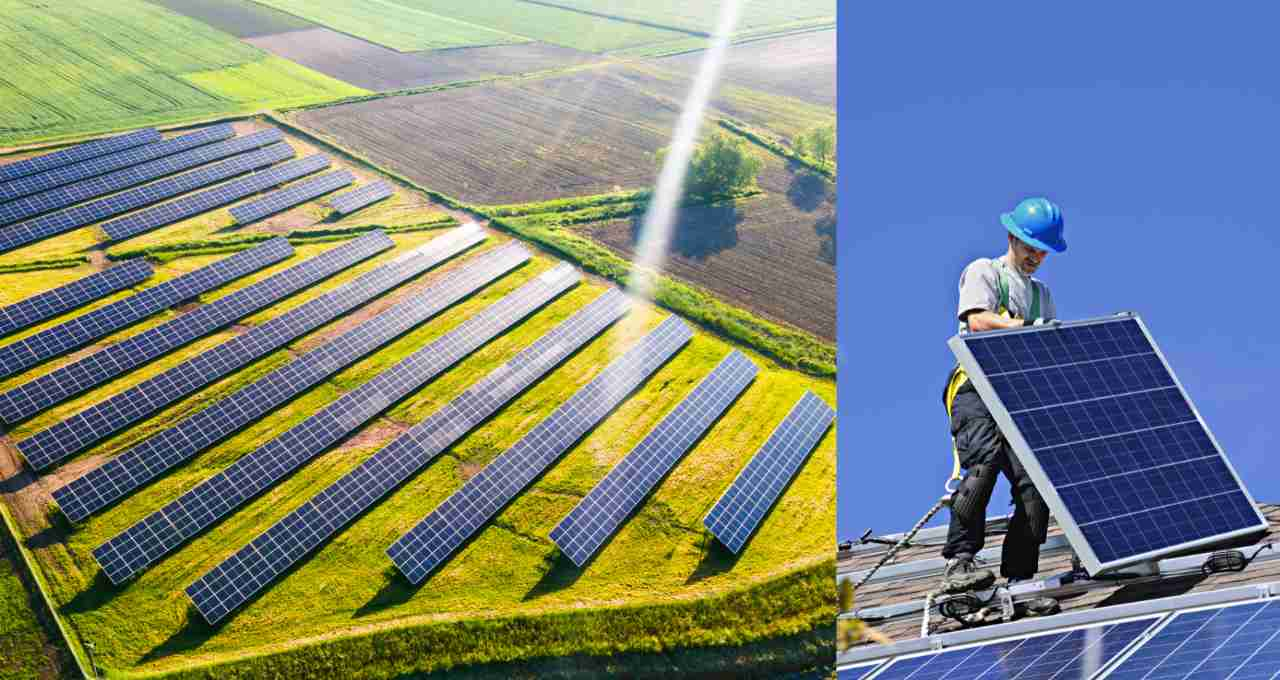While tariffs imposed by the United States may lead to losses in exports for India's solar industry, domestic demand is compensating for it. Government policies, subsidies, and increasing energy needs have accelerated India's solar energy sector. In the coming years, India is expected to compete with China based on its capacity and domestic supply.
India Solar Industry: India's solar energy sector is progressing rapidly despite the pressure of US tariffs. The US has been a significant customer for Indian solar companies, but exports have become challenging after President Trump imposed a 50% tariff. Nevertheless, the growing demand for clean energy in the domestic market, government policies, and declining costs have strengthened the industry. Companies like ReNew from Jaipur and Vega Solar from Hyderabad are increasing their production capacity. India has set a target of 500 GW of clean energy by 2030, with solar energy playing a major role.
Domestic Market Becomes the Pillar of Support

The rising demand for electricity in India and people's inclination towards clean energy have become the biggest foundation for this sector. Experts state that while US tariffs will certainly impact the exports of companies, the demand for solar energy within the country is so high that companies will not face difficulty finding buyers. Currently, about one-third of the solar panels made in India were exported to the US. Now, with reduced exports, these very panels will be absorbed by the domestic market.
The Challenge of US Tariffs
US President Donald Trump recently imposed a 50% tariff on Indian goods. This has directly impacted the exports of solar companies. The US was the largest foreign customer for Indian companies. However, they now need to shift their focus. Experts believe that the damage from US tariffs is not as significant as it appears, because domestic demand is continuously growing, and the government is providing full support to this sector.
Preparation to Compete with China
China still produces over 80% of the world's solar components. Indian companies also import raw materials and many essential equipment from China. Despite this, India has rapidly increased its production capacity in the last few years. Now, Indian companies are not only meeting domestic needs but are also gradually moving towards reducing their dependence on exports.
Rapidly Growing Production Capacity

ReNew, based in Jaipur, manufactures solar modules annually that can generate approximately 4 GW of electricity. This is equivalent to meeting the energy needs of about 2.5 million Indian households. This factory employs around 1,000 people and is considered a symbol of the accelerating pace of India's solar energy industry. Similarly, Vega Solar, a Hyderabad-based company, has also changed its business model. Before COVID-19, 90% of its business was export-based, with only 10% for domestic supply. This ratio has now completely reversed, and the domestic market has become its main pillar.
The Indian government is continuously taking policy decisions to promote this sector. Subsidies, tax exemptions, and incentives for clean energy are strengthening companies. Experts say that the cost of solar energy has now reduced to about half compared to coal-fired power plants. This is why companies consider it the biggest energy requirement of the future.
Expanding Scope of Solar Energy
In the last 10 years, India's installed solar energy capacity has increased 30-fold. Currently, about 170 GW of renewable energy projects are in the pipeline, most of which are related to solar energy. These projects will be completed in the next few years. India has set a target of producing 500 GW of clean energy by 2030, with solar energy having the largest share.
New Boost from Exports
Agencies like IEEFA and JMK Research believe that India's demand for solar modules in the next two years could exceed domestic sales. This will happen because India will not only manufacture modules for itself but will also export them. However, the need for imports from China still remains, but India is gradually working towards reducing this dependence.















